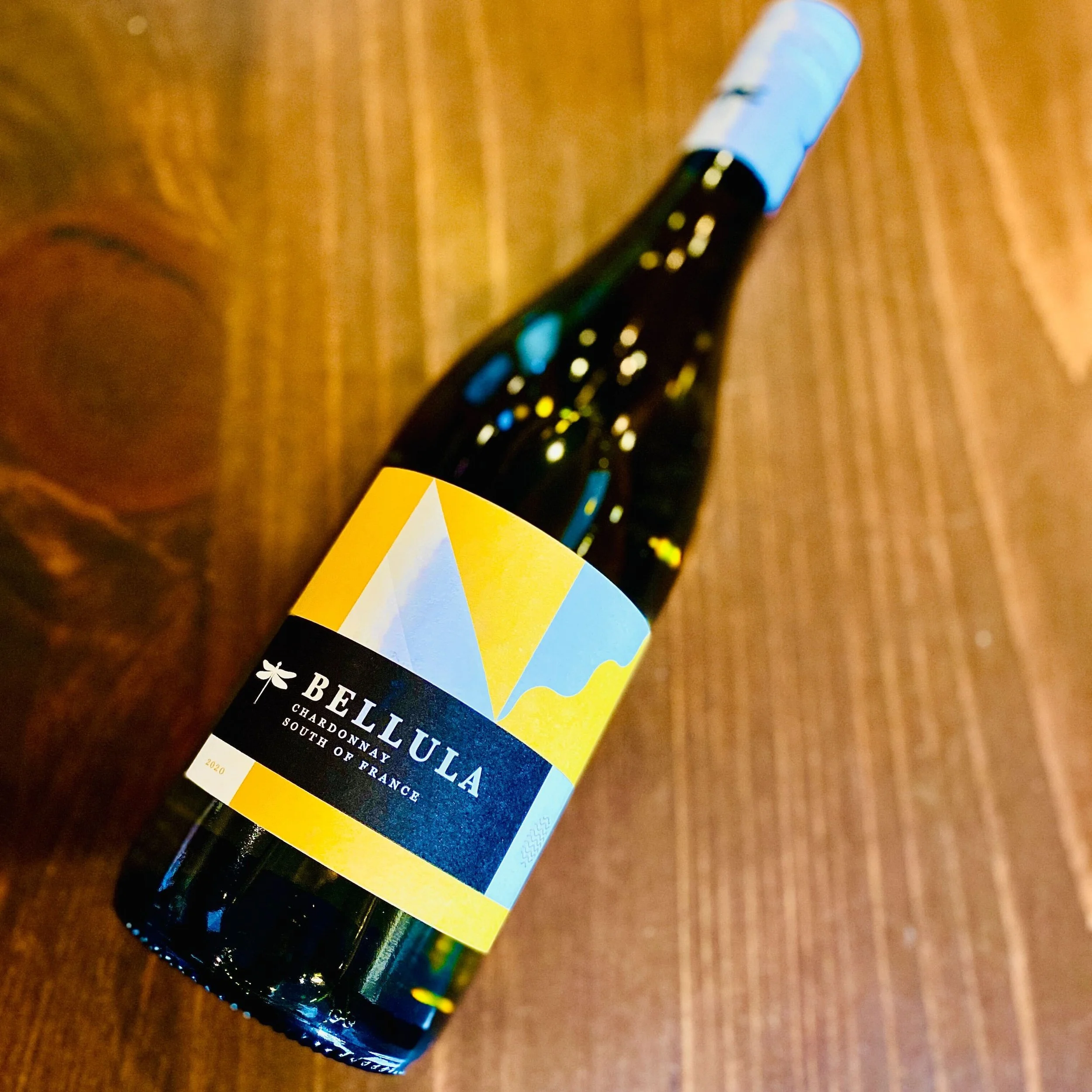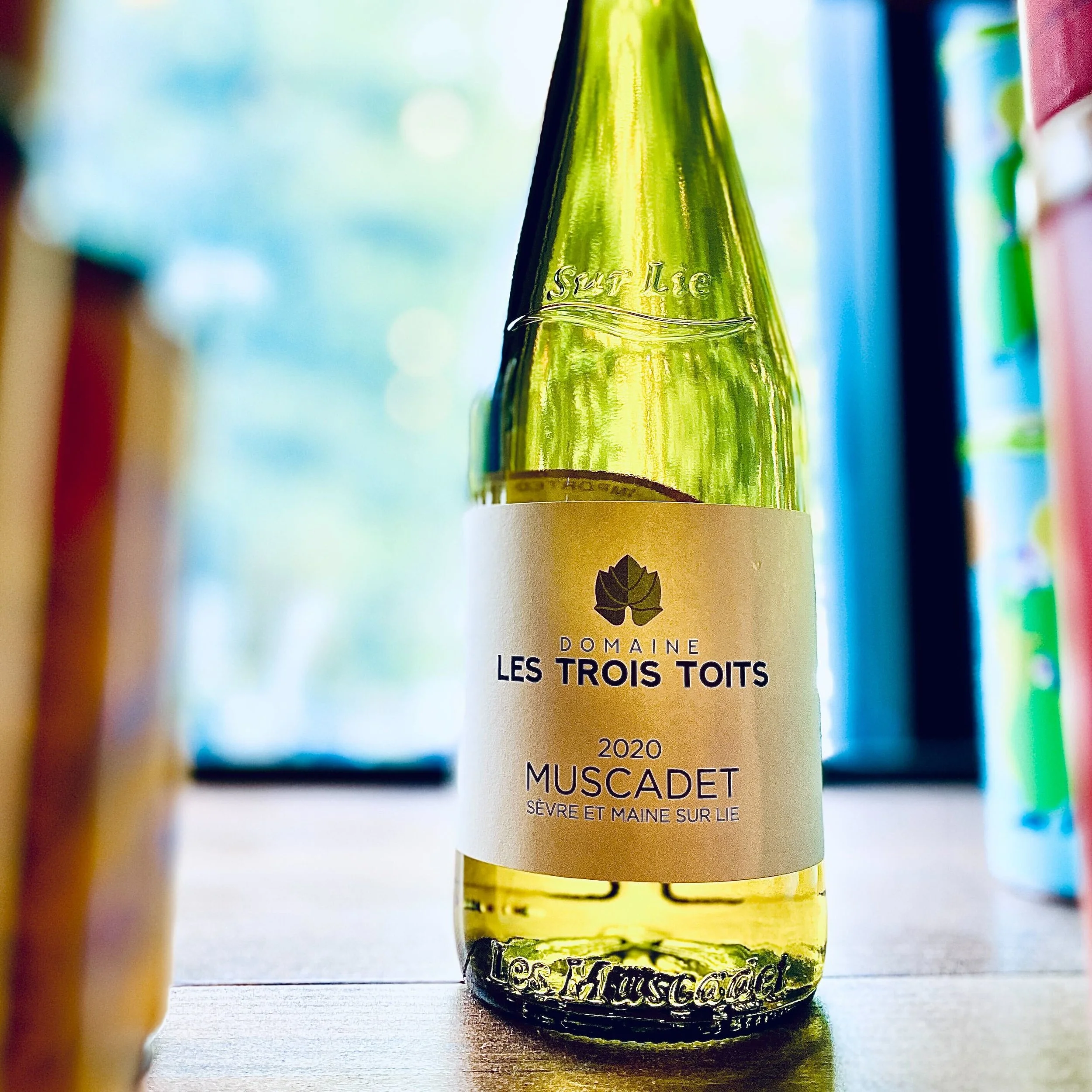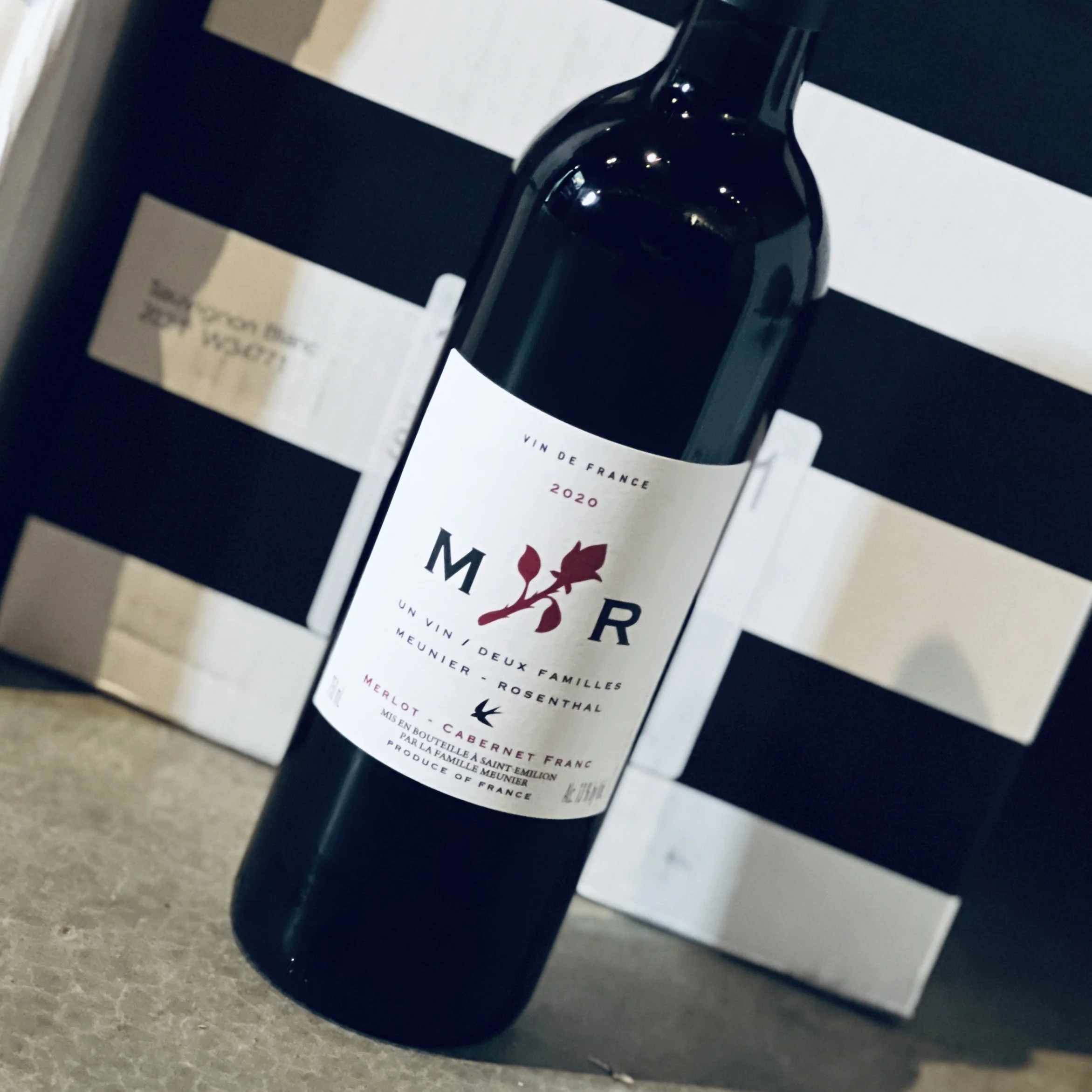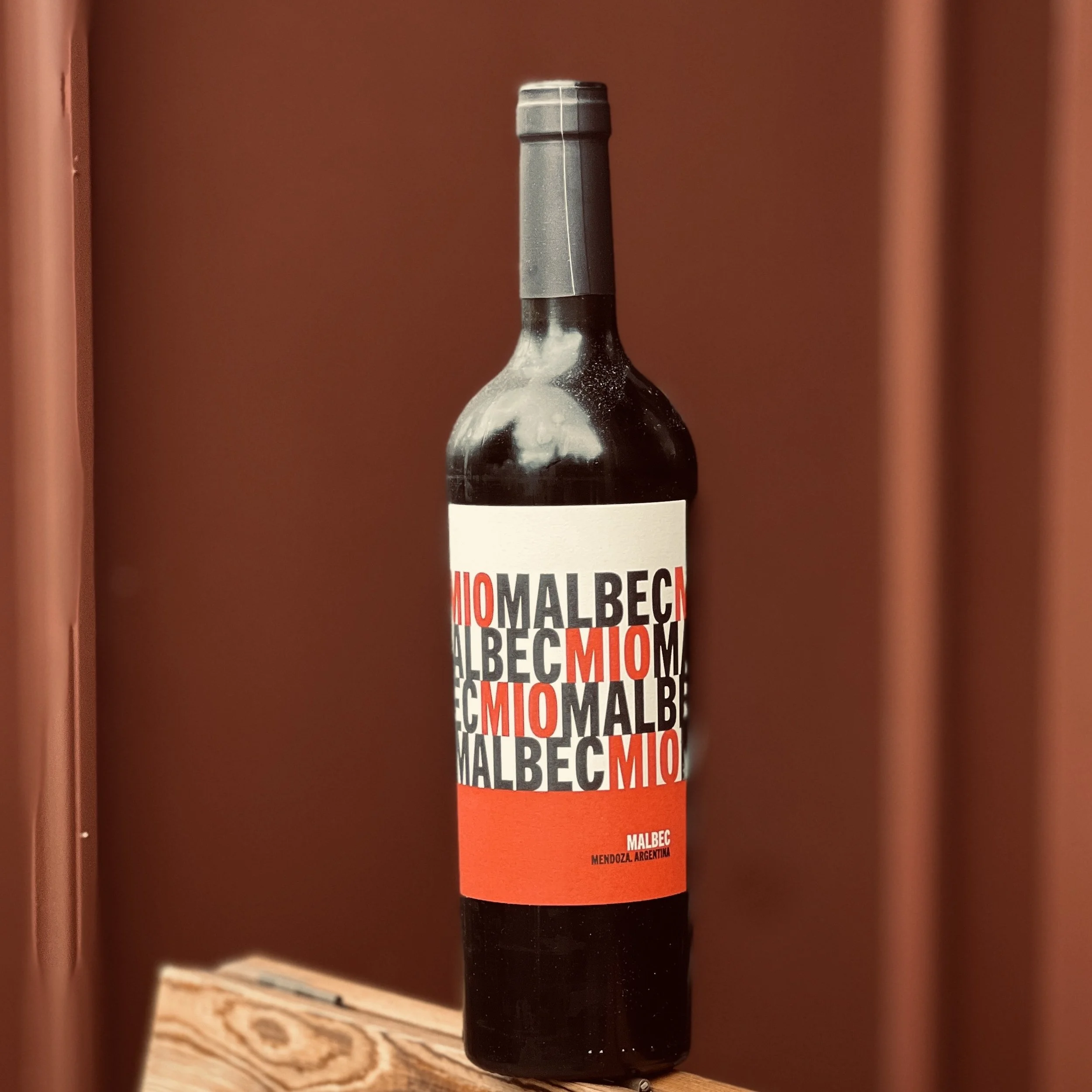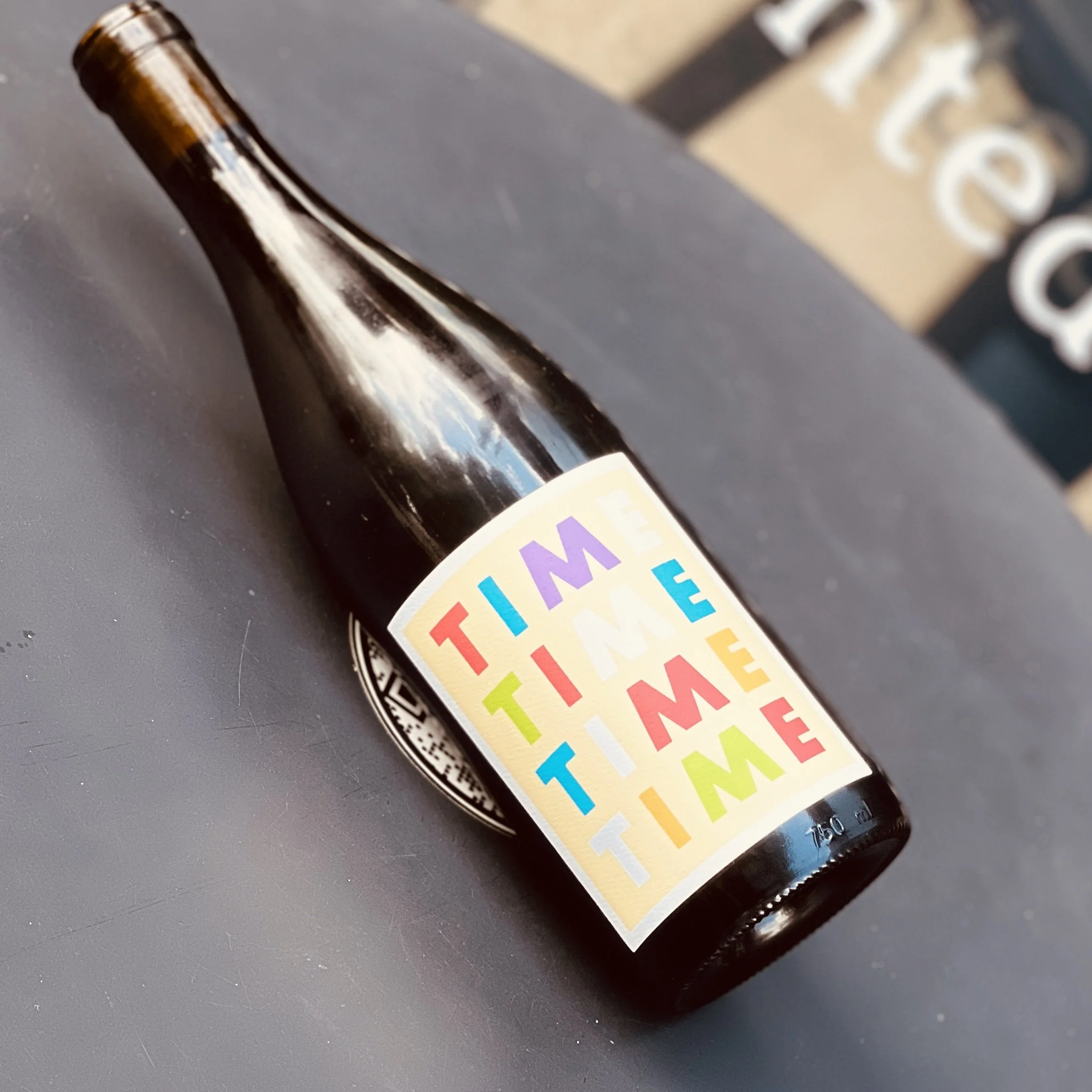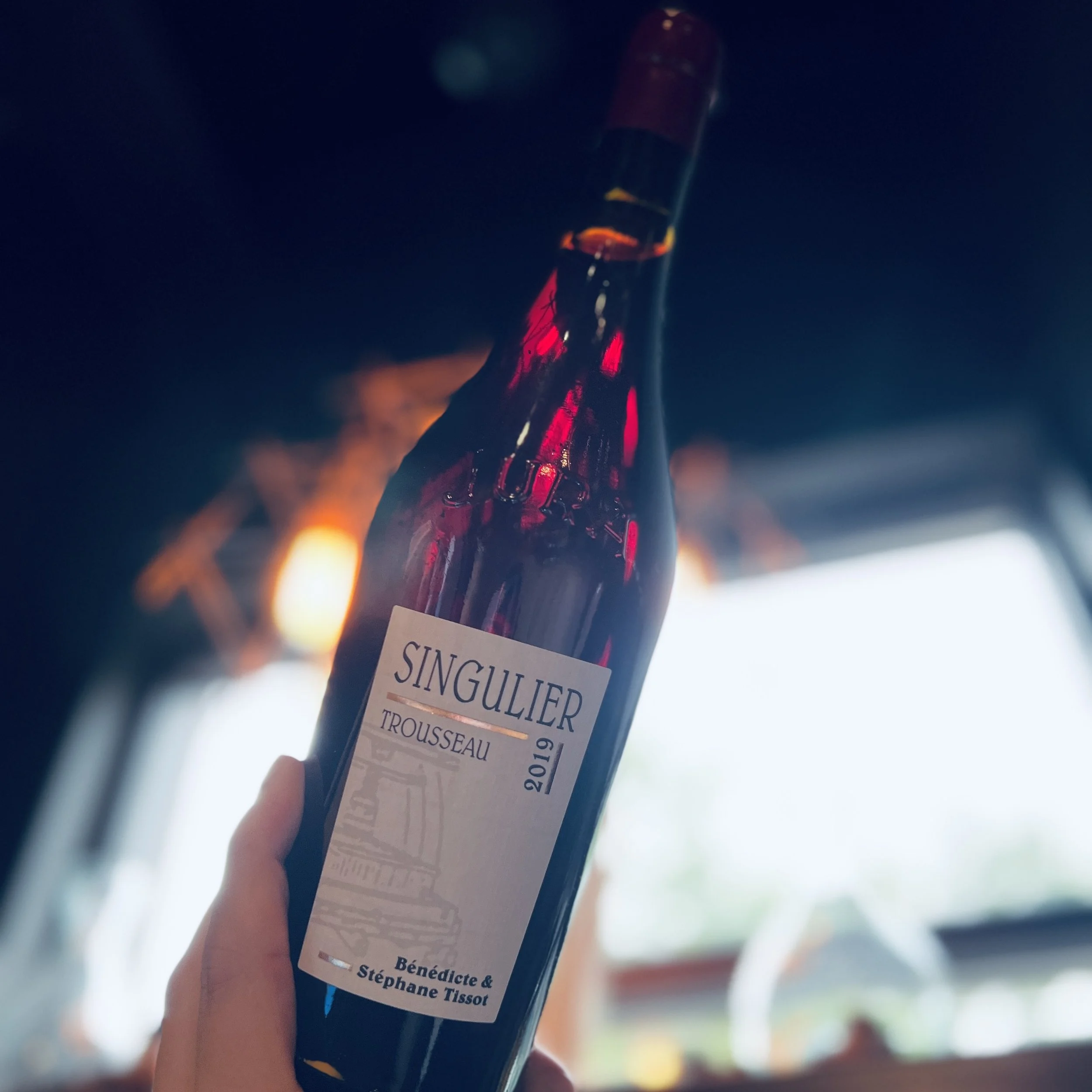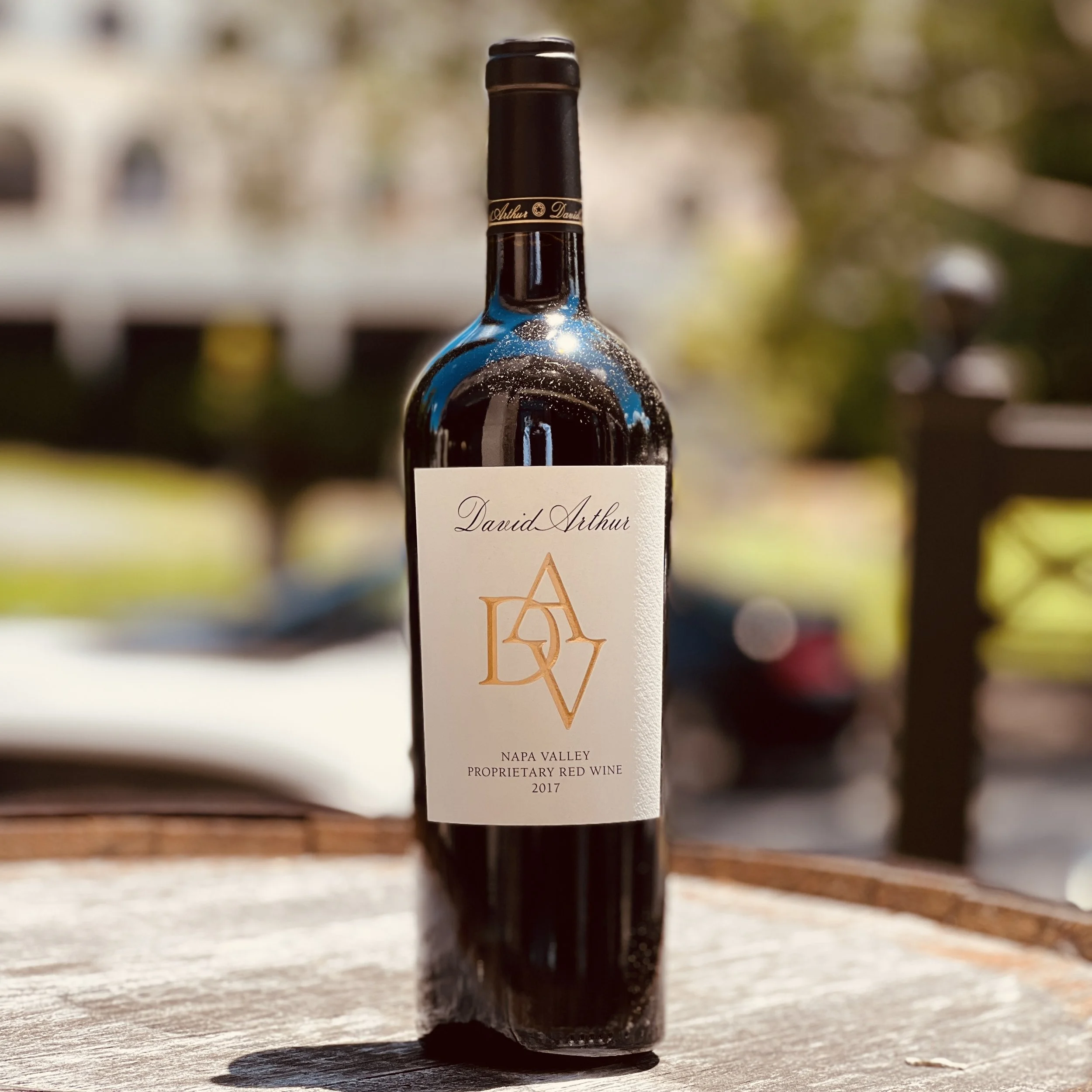UNDERGROUND WINE SOCIETY: august
SCROLL BELOW TO FIND INFORMATION ON YOUR WINES!
The Explorer
$49/month
White/Orange/Rosé
Bellula Chardonnay
Grapes: 100% Chardonnay
Region: Languedoc-Roussillon, France
Food Pairing: White Fish Cooked in Browned Butter
Wine Notes: 7 months in stainless steel tanks with some lees aging. This wine offers a clear golden color with an intense nose of familiar citrus and exotic passion fruit and mango. A refreshing wine, round and creamy on the palate, whose generous and fruity flavor carries out the aromatic complexity of the nose with balanced concentration. A minerally, fruity finish cleanses the palate for another sip, then another glass. A beautiful and flavorful modern white wine! Serve chilled.
About the Winery: This wine is a joint venture between Vianney Castan and JP Bourgeois. Vianney owns the Château St- Jean d’Aumières, neighbor of Mas de Daumas Gassac in Gignac. The young vines come from the center of the Languedoc around the terroir of Beziers, in the Oc region. Bellula aims at expressing all the Languedoc has to share: Passion, know-how, and joie de vivre. Handcrafted wines, to be enjoyed every day with or without food, for constant gratification at a very reasonable price!
Domaine Loberger
Grapes: Pinot Blanc
Region: Alsace, France
Food Pairing: Roasted Buttermilk Chicken & Herb Potatoes
Wine Notes: Located in the “rain shadow” of the sub-Vosges hills. Soil is composed of granite, limestone, clay, shale, sandstone. Biodynamic & natural farming. Aged 12 months in stainless steel tanks.
About the Winery: Domaine Loberger grows 20 acres of superior vines in the strictest accordance with biodynamic agriculture. The estate is located in the small village of Bergholtz, nestled at the bottom of the Vosges hills – a great geological site and birthplace of the famous Alsace wines. In 1984, Jean-Jacques Loberger took over the estate and started farming biodynamically and naturally, adhering to the strictest standards: regular manual work of the soils, hand-harvests, and low yields, giving their wines perfect balance and uniqueness. The 20 acres of vineyards are divided over 3 miles and benefit from both southeast and southwest exposure. Most of the vines are located on the hillsides of Guebwiller, Bergholtz, and Bergholtz-et-Zell, at up to 1200 feet elevation. These vineyards are geologically very diversified and gather amazing locations such as Grands Crus Kitterle, Saering, and Spiegel, as well as “lieux-dits” Meissenberg, Schwarzberg, and Trottberg.
Domaine les Trois Toits
Grapes: Melon de Bourgogne
Region: AOC Muscadet Sèvre et Maine sur lie
Food Pairing: Moules Frites (Mussels and French fries)
Wine Notes: With notes of white flowers, our Muscadet shows beautiful balance through its fruit and minerality. Richness and vivacity are two main components of this beautiful vintage and are perfect to enjoy with some fimily and friends. To enjoy it best, try it with some jumbo shrimps or a platter of sea food
About the Winery: Working with a philosophy of living soils, we work the ground lightly without plowing it. We use only controlled organic products. We do not use any pesticide.
Gonc “Canvas” Pet Nat
Grapes: 100% Pinot Blanc
Region: Stajerska, Slovenia
Food Pairing: Grilled shrimp with fresh-herbed butter
Wine Notes: Fresh lemon peel and almonds that trigger an image of wealth in the brain. Cloudy and juicy bubbles burst with flavors green grapes, lemons, and fresh herbs.
About the Winery: Peter Gonc is a 4th generation winemaker and grape grower. His family tradition got its start in 1936 and now Peter is producing some of the most fun wines in Slovenia. Pétillant Naturel AKA Pét-Nats, so dubbed by the hip wine scene of today, are the trendy new-but-old style way to make bubbles. These wines are actually made using a method that pre-dates the Champagne style – and is way cheaper to do. Much like your parents’ old band tees and bell bottom jeans, they are back, and back with a vengeance.
This style of wine originated in France and is said to be the O.G. of the sparkling wine family. Only 300 total cases (12 packs) of these bubbles were produced, so we're super lucky to share them with you. These effervescent, refreshing bubbles with smells of fresh lemon and minerals, crisp pear and almonds springing form the bottle. The sippin' is all about green grapes, lemon peel and herbs with a slight hint of feeling fancy AF. The glass will look look and wild, with big juicy bubbles like an awesome Thursday night in college.
Division Wine Co. L’Orange
Grapes: Roussane (33%), Gewurtzaminer (16%), Riesling (13%), Muller-Thuragu (12%), Pinot Gris (12%), Chardonnay (12%), Sauvignon Blanc (2%)
Region: Willamette Valley,Oregon
Food Pairing: Ethiopian Injera & Tibs
Wine Notes: 6 MONTHS NEUTRAL AND STAINLESS BARRELS. Our goal is to make that first orange crush wine - a wine that has all the lovely citrus and floral aromatics we adore in skin contact whites without the more astringent tannins that are sometimes present in skin contact white wines. This orange wine should be enjoyed immediately!
Capturing complex colors, textures, and aromatics deliciously was the main goal, and our 2021 L'Orange demonstrates the beautiful harmony we were seeking through a blend of white layering varied varieties and macerations. Along with notes of tangerine peel and peat, we can't help but notice a touch of eucalyptus in the wine, connecting it to artist Camille Shu's "Eucs".
About the Winery: With seven varieties represented in L’Orange, there’s a lot to keep straight! We’ve learned from ten years of skin contact fermentations on white grapes that coaxing the most desirable characteristics requires knowing how long to keep each one on the skins. For the second year in a row, we’ve really come to love the co-ferment of roussanne and riesling, which sees the most time on skins - nearly 30 days. The other grapes range from 2-21 days. The wines are aged separately in old barrels for about 6 months before blending and bottling. Unfined, unfiltered and with a very small amount of sulfur added at blending.
Poderi Cellario “Lafrea” Langhe Favorita
Grapes: 100% Favorita (Vermentino)
Region: Piedmont, Italy
Food Pairing: Arugula and Shaved Cheese Salad
Wine Notes: 100% Favorita (Vermentino). Hand-harvested into small bins. De-stemmed, pneumatic direct press. Natural fermentation in stainless steel. Aged in stainless steel tanks on lees from winter through spring. Bottled with minimal sulphur (~10ppm) and without filtering or fining.
About the Winery: Fausto and Cinzia Cellario are 3rd generation winemakers in the village of Carru` on the western outskirts of the Langhe. The family believes in only working with local, indigenous Piemontese grape varieties and fiercely defends local winemaking traditions both in the vineyard work and the cellar practices. The Cellario vineyard holdings cover some 30 ha between 5 different vineyard sites covering the southern Langhe. With holdings in Novello and Monforte, the Dogliani plot is arguably the family’s most prestigious land and I would consider them Dolcetto specialists. Vineyard work is organic (soon to be certified) and all the fermentation take place with indigenous yeasts. Sulfur is only added in tiny quantities at bottling if necessary (a practice not common with a winery in this mid-size range).
Union Sacre
Grapes: Riesling
Region: Santa Barbara, CA
Food Pairing: Lemon Chicken Skewers with Harissa Yogurt Sauce
Wine Notes: Crisp and dry with notes of apple wet stone, honeysuckle, and citrus.
About the Winery: Union Sacré is an homage to Alsace, France and beauty’s odd ability to build unexpected bridges.
Reds
Dinamo Nucleo 1 Rosso
Grapes: The “Nucleo 1” is a 50/50 blend of Gamay del Trasimeno (Grenache) and Sangiovese.
Region: Umbria, Italy
Food Pairing: Fried Calamari with Cajun Seasoning
Wine Notes: Spontaneous fermentation, 6 days skin maceration, then aged in fiberglass tanks. No added sulfur and no filtering or fining.
About the Winery: The “Dinamo” project is an exciting nod to the historic peasant wines of Umbria, in a collaboration between Danilo Nofrini with his children Rachele and Simone, and Danilo Marcucci. After more than 40 years of making wine, Danilo Marcucci wanted to embrace the kind of wines that he used to make as a child with his grandfather. Together, in the highest vineyards around Lake Trasimeno, the Nofrinis and Marcucci have succeeded in creating an agricultural program that aims at wines that are pure and natural, with high nutritional and energy values that go beyond fashions, trends and judgements. Wines born of the land, and of a simple story from the humble and reserved people of the Umbrian countryside.
Domaine Meunier “MR”
Grapes: Merlot, Cab Franc, Cab Sav
Region: Bordeaux, France
Food Pairing: Lamb with a Wild Mushroom Risotto and a Red Wine Demiglaze
Wine Notes: This is a brand new wine, so there is not much on it! It is made in the style of your classic Bordeaux Blends and is a collaboration between Chateau Haut-Segottes and Rosenthal Wine Merchant. Super new and exclusive for our wine club members!
MIO Malbec
Grapes: 100% Malbec
Region: Mendoza, Argentina
Food Pairing: Mushroom & Taleggio Pizza
Wine Notes: Bright red-ruby. Ripe aromas of blackberry, blueberry, black cherry, plum and chocolate. Complemented but not overwhelmed by deep sexy oak. Rich and lush in the mouth, with flavors of plum, mocha, chocolate and coffee. Suave, round and smooth.
About the Winery: Hector and Pablo Durigutti are the winemakers behind the MIO wines. Their backgrounds are quite complementary: Hector started at Alto Las Hormigas at the age of 15 and has completed 25 projects at various well known wineries, learning old world techniques and agriculture. Pablo started at La Rural, a winery now owned by Catena, and honed new world viticultural practices. The brothers started with only 3000 bottles in 2002 and production has grown steadily.
Tenute Dettori Renosu
Grapes: Equal parts ancient Cannonau, Monica & Pascale
Region: Sennori / Sardegna/ Italy
Food Pairing: Lamb & Rosemary Ravioli
Wine Notes: Dark red cherry in color, baked blackberry and raspberry fruit flavors are sweet and tangy in this bright, medium-bodied red, accented by fragrant notes of black tea leaf and star anise, with a hint of aged leather. Zesty and mouthwatering on the lingering finish.
“Renosu” means sand, referring to the sandy vineyard area near the coastline.
About the Winery: To make natural wine is not a trend for Alessandro Dettori, but rather the soul of his family’s work since 1860. Alessandro was just a boy of 12 when he began to work with his grandfather. In Romangia, the region of northern Sardegna that includes Sorso and Sennori, the vineyards have been so prized from ancient times that they were consistently protected from destruction during various conflicts, including by Napoleon. The terrain is more rugged in the North; it is a form of meditation for Alessandro to observe the hawks that wheel above his mountain walks. Sheep and wild boar are part of the area’s biodiversity, and the vineyard rows are home to aromatic herbs and indigenous berries that attract pollinators. Dettori has 26 hectares under vine, many of them more than 100 years old. With alluvial limestone and gravel so similar to that of the Southern Rhone, the soil in Romangia is often compared to that of Chateau Rayas.
Tenuta Santa Caterina “Arlandino”
Grapes: 100% Grignolino
Region: Piedmont, Italy. Arlandino is the ancient name of Grignolino. Arlandino comes from the vineyard of Mossetti Farms in Grazzano Badoglio and from Moncalvo vineyards, land which since 1300 had been selected for the installation of this typical local grape. The soils are characterized by white, calcareous lands, rich in freshness, able to give Arlandino aromas and structure.
Food Pairing: Porcini Mushroom Risotto
Wine Notes: Vineyard location 350 metres a.s.l. with South/West facing. Density per hectare from 4,500 to 5,000 plants/hectare. Training system - Guyot. Harvesting by hand, in the last ten days of September. Grape production per hectare 60/70 quintals/hectare. Fermentation temperature about 26-28° C, at a controlled temperature. Aging in stainless steel tanks, for 9 months
About the Winery: The philosophy of the Estate’s wine production ensures necessary interventions are made to achieve wines of great quality, value and personality. Modern winemaking techniques combined with years of traditional wisdom coexist at the Estate, together with an absolute respect for the environment. Organic fertilisers, mechanical control of weeds without the use of chemicals, green grape harvesting, leaf stripping, and hand picking small parcels, working with these small selections in the cellar, are just some of the key ways that Santa Caterina Estate ensures top-quality production.
Bow & Arrow “Time Machine”
Grapes: Blend of Pinot Noir, Gamay, & Cab Franc
Region: Willamette Valley, Oregon
Food Pairing: Roasted Duck with Orange Sauce
Wine Notes: Bright, fresh, crunchy and great acidity. This wine is equally comfortable on a dinner table entertaining guests, as it is on a front porch with a slight chill on hot summer days.
About the Winery: My name is Scott Frank and Bow & Arrow is my interpretation of the Willamette Valley’s humble terroir. The most important parts of that equation are the Willamette Valley and “humble.” Our growing region is frequently approached as a grand terroir destined to produce prestigious wines with an implicit Burgundian influence. I’m honored to make wine here. Still, the valley I know and love is as much a blue-collar agricultural area as it is a boutique wine destination. It’s as much a collection of relatively simple, clay dominated soils as it is home to multi-generation family estates and renowned AVA’s. Bow & Arrow uses a different template to explore this different, simpler side of the Willamette Valley. Instead of Burgundy, we pay homage to the refreshing and decidedly working class wines of France’s Loire Valley.
Villa Saint Anna Chianti Colli Senesi
Grapes: Cabernet Franc
Region: Chinon, France
Food Pairings: Perfect for Poultry and White Meats and Charcuterie or simply as an aperitif.
Wine Notes: Very "Ligerian" wine, fresh, aromatic, greedy, supple and lively to taste within 3 to 5 years at a temperature between 16 and 17 degrees.
About the Winery: In the beautiful country of Véron, cradled between the Loire and the Vienne, the Domaine Olga Raffault has been transmitting its know-how in the production of its Chinon wines for five generations! Olga Raffault has devoted her whole life to these landscapes that she loved so much and has always been able to share her love of wine!
The Connoisseur
$98/month
Donnachadh
Grapes: 100% Chardonnay
Region: Sta. Rita Hills, California
Food Pairing: Toasted Pine Nut Salad with Choice of Meat
Wine Notes: Meyer lemon, crisp jicama, light mint and chipped oak aromas show on the very exciting and inviting nose. The light kiss of oak on the palate frames yuzu zest, chamomile and crushed sea-shell flavors. It has weight and creaminess on the palate, but balanced with bright and lingering acidity.
About the Winery: Family owned and organically farmed, Donnachadh Vineyard is located on Santa Rosa Road in the Sta. Rita Hills AVA of Santa Barbara County. The property is 285 acres with approximately 40 acres planted to vine in 2013. We grow Pinot Noir, Chardonnay, Syrah, and Gamay Noir.
Forlorn Hope
Grapes: 100% Grenache
Region: Calaveras County, California
Food Pairing: Bangers & Mash
Wine Notes: This vintage has brought forth a fresh and lively Grenache with tart acid, crunchy red fruits (pomegranate, freeze-dried raspberries), strawberry jam, black olive brine and rosemary. Ready to drink now and will age well for the next decade. With a distinctively pale hue, explosive aromatics and stout grip, our Grenache is extremely unique to this site. Grown on the Rorick estate vineyard in Calaveras County, on soils comprised of a layer of schist over dolomite-rich limestone. The combination of limestone, 2000' elevation, and cold nights of the Sierras produce fruit with depth, texture, and brilliant natural acidity; minimal handling in the winery allows for an honest and pure expression of site and variety to shine through. The fruit was hand-picked and destemmed into small open-top fermenters. The must received pigeage and/or punchdowns twice daily; fermentation lasted 21 days at which time the wine was pressed down to 500L puncheons and 227L barriques of neutral oak. The wine was racked off of its lees at 14 months and saw a total of 16 months elevage.
About the Winery: We love the longshots. We love the outsiders, the lost causes, the people / projects / ideas abandoned as not having a chance in the world. We love the longshots because we’re all about tenacity, we relish a challenge, and – we admit it – we love us a good tussle.
Hans Brinker, the Dutch boy who stuck his finger in the dike? We’re big fans of his. Penelope – weaving all day and ripping it out all night? She’s with us. Henry V’s speech at the Battle of Agincourt? Pretty much our theme song. Taken from the Dutch ‘verloren hoop’, meaning ‘lost troop’, Forlorn Hope was the name given to the band of soldiers who volunteered to lead the charge directly into enemy defenses. The chance of success for the Forlorn Hope was always slim, but the glory and rewards granted to survivors ensured no shortage of applicants. These bottles, the first produced by Forlorn Hope Wines, were our headlong rush into the breach. Rare creatures from appellations unknown and varieties uncommon, these wines are our brave advance party, our pride and joy – our Forlorn Hope.
Poderi Le Ripi “Sogni e Follia”
Grapes: Sangiovese (100%)
Region: Montalcino, Italy
Food Pairing: red meat, game, mushrooms or truffles
Wine Notes: Deep alluvial soil rich in silt and sand, mixed with irregular rocks: mostly gravel and alberese. Manual harvest during the second half of September. Indigenous Yeast. Fermentation and maceration for 20 days in big open-tops oak barrels. 24 months aging in big oak barrels, and six month in cement
About the Winery: “Podere le Ripi started as a dream, and a very old one too: a dream to create something. This dream is also an aesthetic one: creating something extremely beautiful. When I was 18 years old my dream was supposed to be an island, and Podere le Ripi is not an island, but it is some sort of a peninsula that dives into the noisy Orcia river. With time, this something beautiful became also healthy and sustainable, and later we realized that it could have been applied somewhere else, therefore becoming replicable and socially positive in its approach.” Francesco Illy, Owner/Winemaker.
Foradori Fontanasanta Manzoni Bianco
Grapes: Manzoni Bianco
Region: Fontanasanta, Trento Hills
Food Pairing:
Wine Notes: The hill overlooking Trento, with its clayey-limestone soils, welcomes the Manzoni Bianco and matures the grapes in late September. The character of the Fontanasanta vineyards is expressed through this hybrid, born of a mix of Riesling with Pinot Bianco. Its ability to evolve overtime requires patience; Fontanasanta Manzoni Bianco is a wine that really comes into its own at least three years after harvest.
About the Winery: Our awareness of nature’s rhythms and cycles has been perfected through observation over time: each season opens new horizons, every day we learn and understand a little more. We have learned to pay attention, to grasp the subtle differences existing in nature and to preserve the true character of the grape in the expression of its land of origin. Our daily farming gestures are elevated to creative impulses: it is our duty and privilege to wake up every morning and to be free to work according to the message that the earth conveys to us in that moment.
Gen Del Alma “Otra Piel”
Grapes: Cabernet Franc (60%), Cabernet Sauvignon (30%), Pinot Noir (10%)
Region: Gualtallary, Tupungato, Uco Valley
Food Pairing: Bison Burgers with Garlic Relish
Wine Notes: Hand harvested from a single vineyard in Gualtallary. It shows macerated cherries and crushed mint with undertones of cedar, crushed stone, nutmeg, and ground black pepper. The wine is smooth with almost a grape jelly character tightened up with fresh acid and a bright, vibrant finish.
About the Winery: Gen del Alma began in 2011 when five wine loving friends planted a 7 hectare vineyard in Gualtallary at 1400 meters above sea level on alluvial soil composed of calcium carbonate and granite. The group began making wine in a small winery built in 1952 in the town of Tupungato where they work with concrete vats, eggs and amphora made from local sand and stone. The wines are made by Belen Sanchez and the vineyard is farmed by Matias Prieto. We currently import two different cuvees. One is an unfiltered Chenin Blanc from Villa Seca, Tunuyan. The other is a carbonic maceration blend of Pinot Noir and Malbec that comes from the estate vineyard in Gualtallary. These two wines are fun, bright and fresh and show a lighter style of Argentina that we are fond of.
Tissot Trousseau Singular
Grapes: Trosseau
Region: Arbois, France
Food Pairing: Red meats, lamb, duck, tajines, white meats, charcuterie...
Wine Notes: Manual harvest in boxes. Severe sorting, destemming, vatting for 1 month in truncated wooden vats with some trapping. Aging in ½ month (600 liter barrel) 10% new for 1 year. Bottling without filtration. Fairly low dose of SO²: contribution of 2grs/Hl at vatting and contribution of 2grs at bottling
About the Winery: The work we do at our domaine, it is, in a way, the summary of all that.
Exceptional terroirs like Les Bruyères, La Mailloche, En Barberon, Curon.
An attempt to achieve the maximum expression of those terroirs : our 35 hectares of vineyards are cultivated in bio-dynamic viticulture (certified by Demeter) to allow the soils to live, to have grapes untouched by chemical products, to allow natural yeast fermentations, to reduce the doses of sulfur in the cellar. This quest for aromatic diversity has lead us to produce 28 different cuvées, often terroir by terroir, with lots of innovations which take into account the incredible diversity of the vineyards of the Jura. The way we work requires lots of effort on the part of our team. 15 people work full-time all year long aided by several students in the summer and in September, by 50 harvesters. Finally, we have many new projects, from the creation of new cuvées to replanting vineyards like the Clos de la Tour de Curon, without forgetting our desire to constantly increase the quality of the wines which is our principal motivation.
David Arthur Proprietary Red
Grapes: Bordeaux Varietals
Region: Napa Valley, California
Food Pairing: Steak, Grilled Meat
Wine Notes: “After nearly forty years of farming grapes on our Pritchard Hill Estate, we are pleased to announce the launch of the Next Generation of David Arthur Vineyards wine ~ DAV. We have created a new, modern wine that represents the bold personality found in each and every bottle of our Estate wines. This Bordeaux-style blend allows us to weave together the rich, concentrated elegance and power of our mountain-grown Bordeaux varietals as well as the best of surrounding vineyards within the Napa Valley. The wine is aged an average of 20 months in French oak barrels, blended with meticulous care and bottled at our vineyard estate. The result is a complex array of aromas and flavors that deliver plush, mouth-filling structure with soft, elegant tannins. We hope you enjoy, as do we, the accessibility and near-term enjoyment this wine offers in its youth and the greater nuance and complexity afforded with cellaring.”
About the Winery: The origins of David Arthur Vineyards and the Long Family Ranch date back to when the Long family started visiting the Napa Valley in the 1950’s. Don Long, a butcher by trade owned a small grocery store in Portola Valley, near Stanford University and had long been interested in the California wine country. With a keen eye for business opportunities, Don began steadily investing in Napa Valley real estate leading to the acquisition of nearly 1,000 acres atop Pritchard Hill in St. Helena, California. Don’s youngest son, David Arthur, founded the winery with his then wife, Joye Dale, in 1985 with the purchase of 30 French oak barrels. David and Joye’s daughter, Laura Long, now works side by side with her father running the day-to-day operations of the winery and vineyards.
Luigi Giordano
Grapes: Nebbiolo
Region: CAVANNA sub-zone of the Barbaresco zone.
Food Pairing: Meaty pasta dishes, game roasts, braised red meats and mature cheeses.
Wine Notes: Brilliant garnet red color with orange highlights developing with age; ample and intense perfume with fruity, jammy and spicy notes; dry, full and aristocratic flavor.
About the Winery: A stone’s throw from the village center of Barbaresco, the winery was established by Giovanni Giordano in the 1930s during a time of profound crisis in the Italian wine world. After a period of growing and selling grapes, Giovanni’s son, Luigi, made the bold decision to vinify his own fruit, bottling the first wine under his own label in 1958. For an independent grower like Luigi to bottle his own wine at a time when plans to establish an official appellation in Barbaresco were only in their infancy was nearly unthinkable. Today’s winery remains a spirited family effort, driven by the shared vision of Luigi himself, his daughter Laura, and his grandson Matteo. Together, they produce timeless wines from vineyards planted in some of Barbaresco’s most prestigious crus, including Asili and Montestefano. Another Barbaresco bottling from the cru of Cavanna showcases the winery’s elegant, hands-off style of winemaking and represents the only single-vineyard bottling of its kind.

